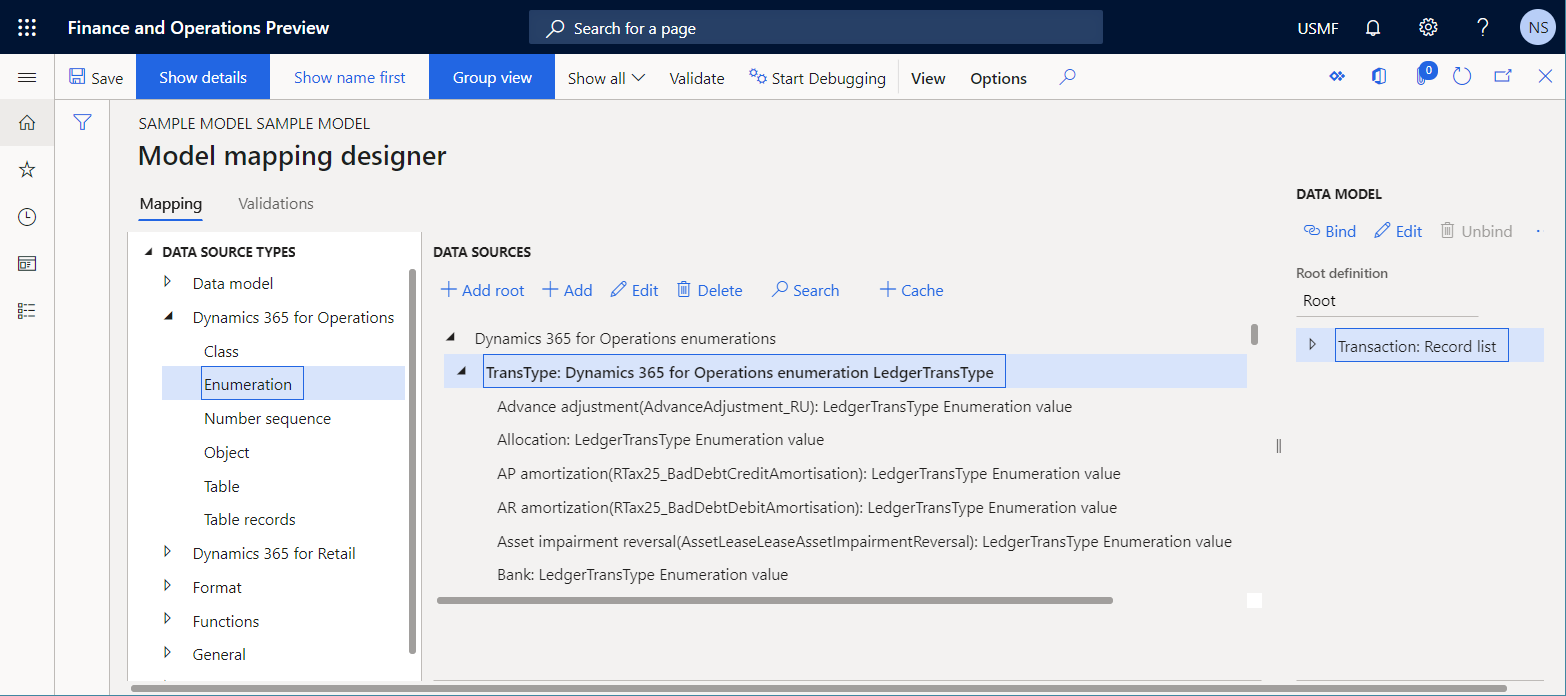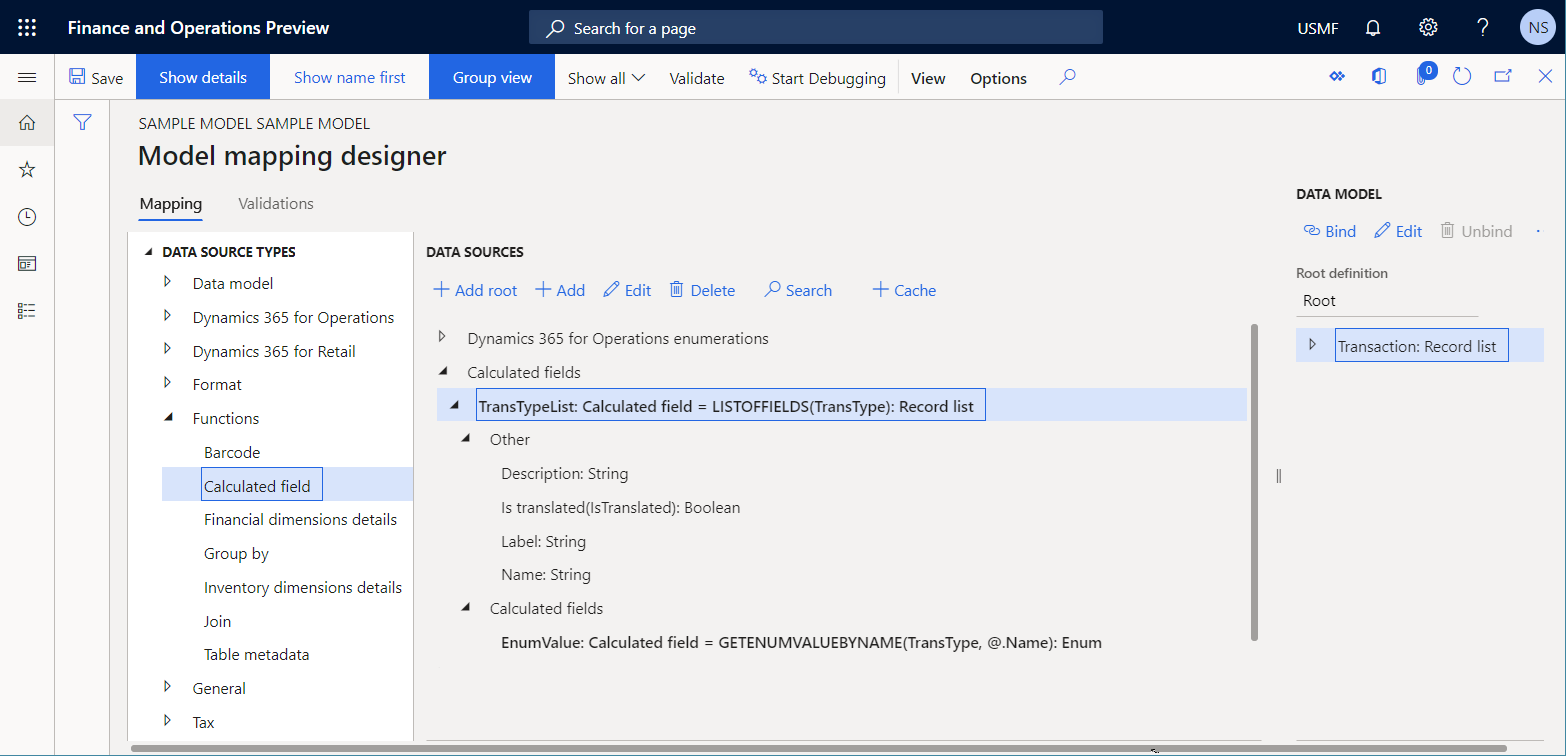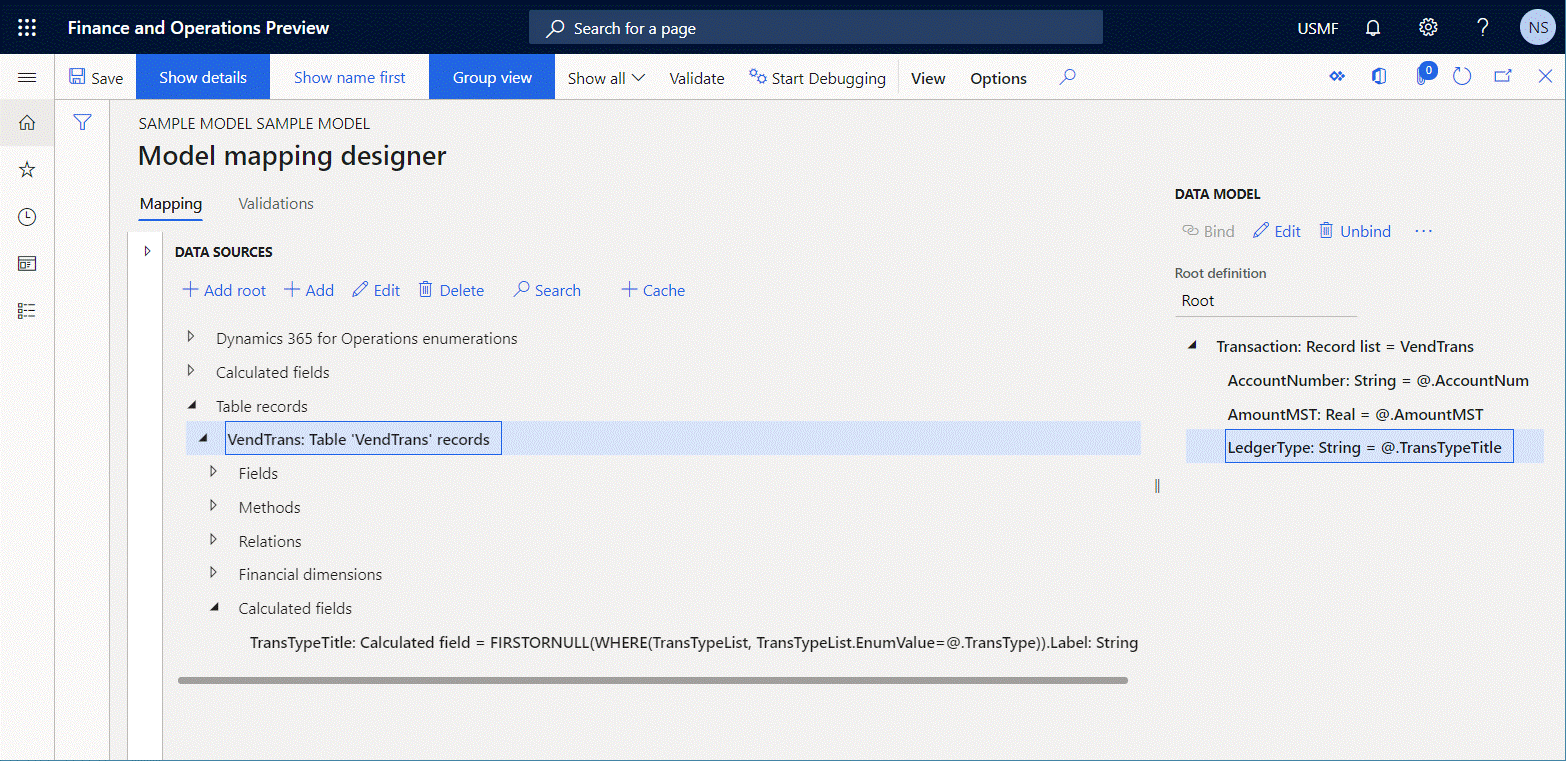GETENUMVALUEBYNAME ER function
The GETENUMVALUEBYNAME function searches for a specific Enum value in the specified enumeration data source by using the enumeration name that is specified as a String value. If the Enum value is found, the function returns it. Otherwise, the function returns the null enumeration value.
Syntax
GETENUMVALUEBYNAME (enumeration data source path, enumeration value text)
Arguments
enumeration data source path: Enumeration
The valid path of a data source of one of the following enumeration types:
- Electronic reporting (ER) model enumeration
- ER format enumeration
- Microsoft Dynamics 365 Finance enumeration
enumeration value text: String
A string value that represents the name of a single enumeration value.
Return values
Nullable Enum
The resulting enumeration value.
Usage notes
No exception is thrown if an Enum value isn't found by using the name of the enumeration value that is specified as a String value.
Example 1
In the following illustration, the ReportDirection enumeration is introduced in a data model. Notice that labels are defined for the enumeration values.

The following illustration shows these details:
- The $Direction data source is configured in an ER report. This data source is configured based on the ReportDirection model enumeration.
- The
$IsArrivalsexpression is designed to use the model enumeration–based $Direction data source as a parameter of this function. - The value of this comparison expression is TRUE.

Example 2
The GETENUMVALUEBYNAME and LISTOFFIELDS functions let you fetch values and labels of supported enumerations as text values. (The supported enumerations are application enumerations, data model enumerations, and format enumerations.)
In the following illustration, the TransType data source is introduced in a model mapping. This data source refers to the LedgerTransType application enumeration.

The following illustration shows the TransTypeList data source that is configured in a model mapping. This data source is configured based on the TransType application enumeration. The LISTOFFIELDS function is used to return all enumeration values as a list of records that contain fields. In this way, the details of every enumeration value are exposed.
Note
The EnumValue field is configured for the TransTypeList data source by using the GETENUMVALUEBYNAME(TransType, TransTypeList.Name) expression. This field returns an enumeration value for every record in this list.

The following illustration shows the VendTrans data source that is configured in a model mapping. This data source returns vendor transaction records from the VendTrans application table. The ledger type of every transaction is defined by the value of the TransType field.
Note
The TransTypeTitle field is configured for the VendTrans data source by using the FIRSTORNULL(WHERE(TransTypeList, TransTypeList.EnumValue = @.TransType)).Label expression. This field returns the label of an enumeration value of the current transaction as text, if this enumeration value is available. Otherwise, it returns a blank string value.
The TransTypeTitle field is bound to the LedgerType field of a data model that enables this information to be used in every ER format that uses the data model as a source of data.

The following illustration shows how you can use the data source debugger to test the configured model mapping.

The LedgerType field of a data model exposes labels of transaction types as expected.
If you plan to use this approach for a large amount of transactional data, you must consider execution performance. For more information, see Trace the execution of ER formats to troubleshoot performance issues.
Additional resources
Trace the execution of ER formats to troubleshoot performance issues